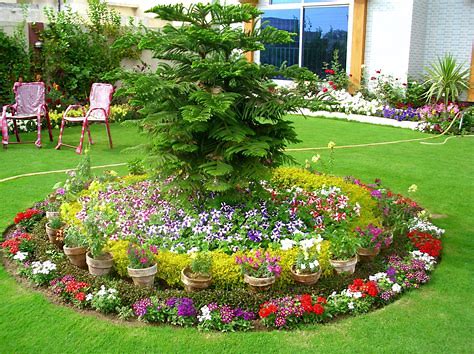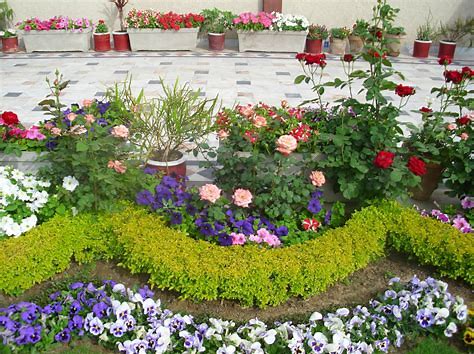
How do i prepare small garden? If so, you have come to the right place.
Creating and maintaining your dream garden may seem difficult but with dedication, knowledge and enough research, it can be done! In this article we will discuss the process of creating a small garden and the steps that need to be taken in order to successfully plan and landscape your own mini oasis.
Key Takeaways
- When creating a small garden, consider what types of plants will work best for the space, the likes and dislikes of your family, and the climate and soil conditions of the area.
- Pick the best spot for a garden that receives at least 6-8 hours of sunlight, is flat or sloped, and has easy access to a water source.
- Clear the ground by getting rid of weeds and sod or using lasagna gardening to create nutrient-rich soil for planting.
- Test and improve your soil by using either professional or DIY options to amend the soil with organic matter such as compost or manure, which can also improve drainage and reduce compaction.
- Prepare planting beds by tilling with a rototiller or digging by hand and making sure the soil is moist enough to form a loose ball in your fist but dry enough to fall apart when dropped.
How Do I Prepare Small Garden

Starting a garden is a great way to bring beauty and life to your yard. Whether you’re looking to plant fragrant florals or start a vegetable garden, the rewards of gardening are plentiful. But if you’re new to gardening, it can be difficult to know where to start.
Luckily, with this step-by-step guide, creating gardens in your yard for the first time doesn’t have to be complicated.
To create a small garden, one must assess their space and decide what plants will work best. After designing the garden and choosing plants, prepare the soil before planting. It is also important to maintain the garden by weeding, pruning, mulching, and fertilizing regularly.
1. Consider What to Plant
When deciding what type of plants to put in a garden, it is important to consider the needs of each type, the likes and dislikes of ones’ family, and the climate and soil conditions that one has. Combining different types can create an appealing and productive garden.
2. Pick the Best Garden Spot
When choosing the best spot for a garden, one should consider the amount of sun it receives (at least 6-8 hours), whether it is flat or sloped, and if there is easy access to a water source. Visiting a local garden center can provide advice on how much sunlight a certain plant needs.
3. Clear the Ground
Creating a garden involves getting rid of weeds and sod, or using lasagna gardening which involves smothering the area with layers of newspaper, organic material, and compost. After several months this will create nutrient-rich soil for planting.
4. Test and Improve Your Soil
Testing the soil is important for plant health and there are both professional and DIY options available. Generally, residential soil needs to be amended with organic matter like compost or manure, which can also improve drainage and reduce compaction. Regular testing and improvement will help ensure plants thrive in the soil.
5. Prepare Your Planting Beds
Preparing planting beds is a crucial step for gardening, which can be done either by tilling with a rototiller or digging by hand. The soil should be moist enough to form a loose ball in your fist but dry enough to fall apart when dropped. Properly preparing the bed will ensure that plants have the best chance at thriving.
6. Start Planting
To enjoy a successful garden, it is important to plan when to plant. Cold-tolerant plants such as pansies and kale can be planted in the autumn or winter, while tomatoes and annual flowers should wait until post-frost.
Midspring and midautumn are ideal for perennials, and seeds can also be sown indoors ahead of time for an early jumpstart. With adequate planning, a beautiful garden will grow swiftly.
7. Water at the Right Time
Watering plants is essential for their health and growth: seedlings should be watered every day, while larger plants need to be watered until their roots become established and then depending on factors like soil type, humidity levels, and rainfall amounts.
Clay soil retains moisture better than sandy soil and sunny and windy conditions will dry out the soil more quickly than cool and cloudy weather, so watering schedules need to be adjusted accordingly.
8. Protect Your Garden With Mulch
Mulch is a beneficial material for gardens as it keeps weeds out, retains moisture, and blocks sunlight. There are various types of mulches available, such as shredded bark and straw, which provide different benefits.
Organic mulches such as bark, compost or cocoa bean shells can also enrich the soil. For different types of plants there are differing levels of decomposition and therefore, different types of mulches should be used accordingly.
9. Maintain Your Garden Regularly
Gardening requires regular tasks such as watering and weeding, as well as removing dead, dying or diseased plants. Additionally, gardeners should keep an eye out for and take action against any destructive insects, like tomato hornworms. Lastly, tall plants should be supported with a trellis or other supporting structure to prevent them from toppling due to weight.